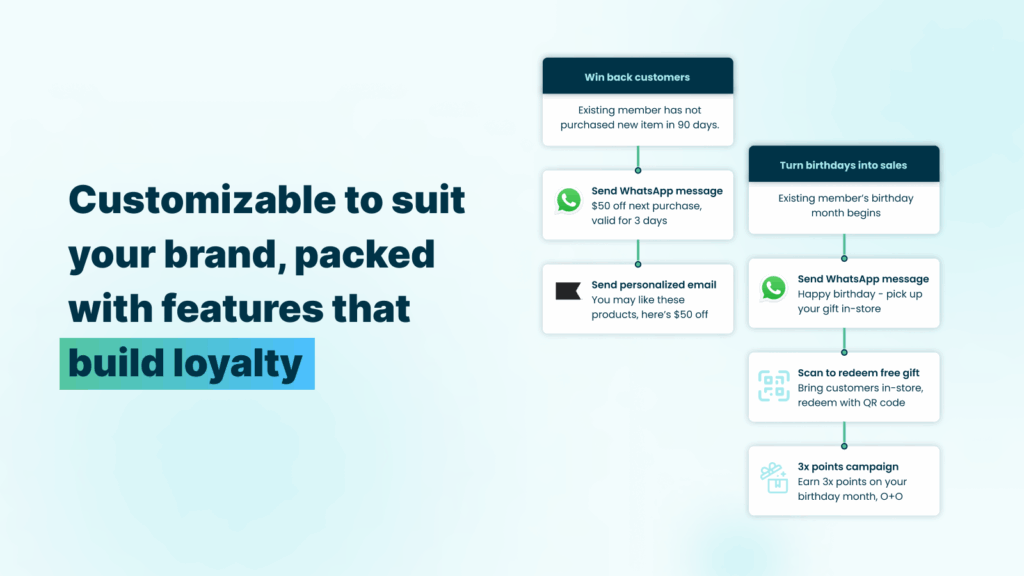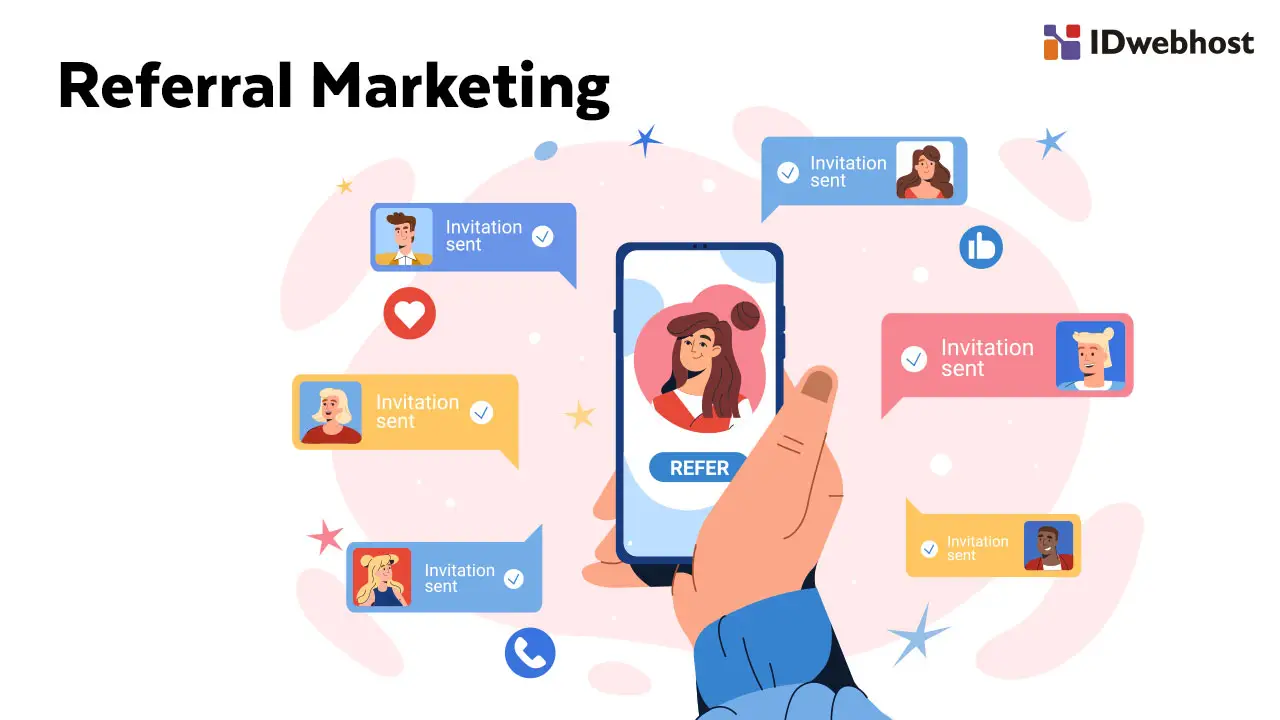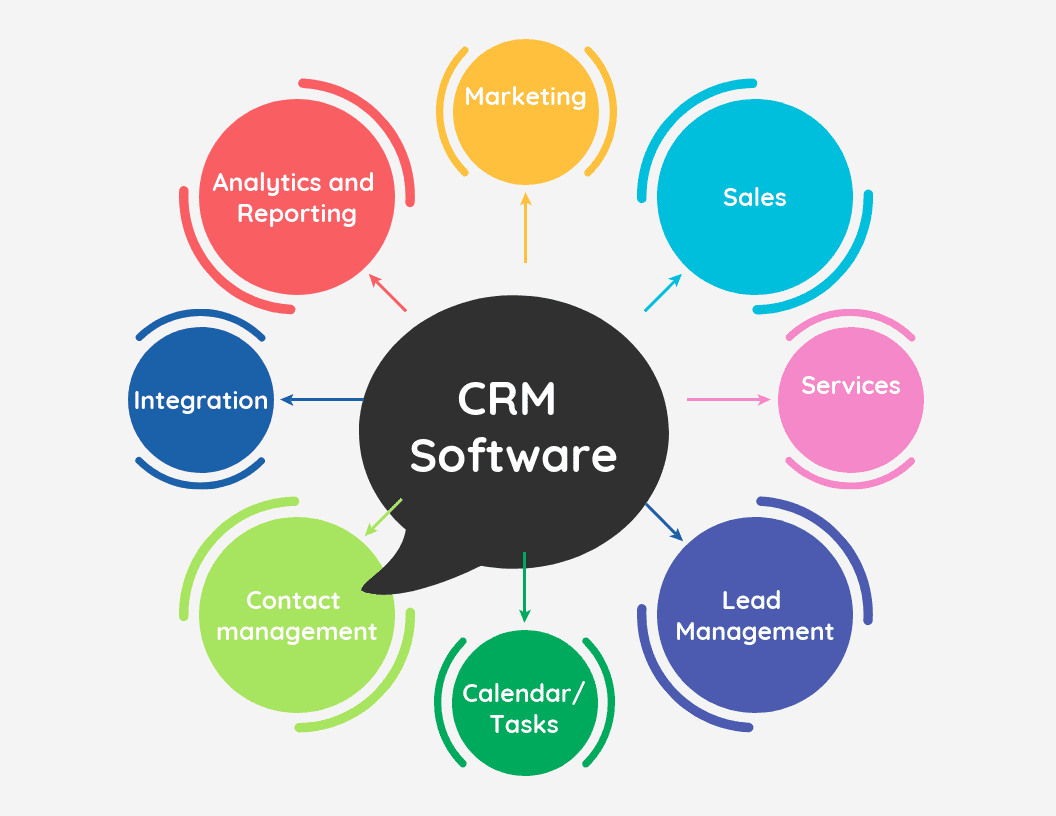
Boosting Customer Retention: A Deep Dive into CRM, Marketing, and Loyalty Rewards Programs
In the dynamic world of business, acquiring new customers is undoubtedly crucial. However, retaining existing ones often proves to be a more cost-effective and sustainable strategy for long-term success. This is where the synergistic power of Customer Relationship Management (CRM) systems, strategic marketing efforts, and well-designed loyalty rewards programs comes into play. This comprehensive guide delves into the intricacies of these three components, exploring how they can be leveraged to cultivate lasting customer relationships, drive repeat business, and ultimately, boost your bottom line.
Understanding the Core Concepts
What is CRM?
At its heart, CRM is a technology-driven approach to managing and analyzing customer interactions and data throughout the customer lifecycle. It’s more than just a software; it’s a philosophy that prioritizes the customer. A robust CRM system acts as a central repository for all customer-related information, including contact details, purchase history, communication logs, and even social media interactions. This consolidated view empowers businesses to understand their customers better, personalize their interactions, and anticipate their needs.
The benefits of a well-implemented CRM system are numerous. They include:
- Improved Customer Service: By having all customer information readily available, support teams can provide faster and more efficient assistance.
- Enhanced Sales Performance: CRM helps sales teams identify and nurture leads, track progress, and close deals more effectively.
- Increased Marketing Effectiveness: CRM enables targeted marketing campaigns based on customer segmentation and behavior.
- Streamlined Operations: Automating routine tasks and workflows frees up employees to focus on more strategic initiatives.
- Data-Driven Decision Making: CRM provides valuable insights into customer behavior, allowing businesses to make informed decisions.
The Role of Marketing
Marketing is the engine that drives customer acquisition and engagement. It encompasses a wide range of activities, from advertising and public relations to content creation and social media management. In the context of CRM and loyalty programs, marketing plays a crucial role in:
- Generating Leads: Marketing campaigns attract potential customers and generate leads that can be nurtured through the CRM system.
- Nurturing Leads: Targeted marketing communications, such as email campaigns and personalized content, help move leads through the sales funnel.
- Driving Customer Engagement: Marketing efforts can keep customers engaged with the brand and encourage repeat purchases.
- Promoting Loyalty Programs: Marketing can be used to raise awareness of loyalty programs and encourage enrollment.
- Gathering Customer Feedback: Marketing channels, such as surveys and social media, can be used to gather valuable customer feedback.
Effective marketing strategies are data-driven, leveraging insights from CRM systems to personalize messaging and target the right customers with the right offers at the right time. This level of personalization is key to creating a positive customer experience and fostering brand loyalty.
Loyalty Rewards Programs: Building Customer Relationships
Loyalty rewards programs are designed to incentivize repeat business and build long-term customer relationships. They offer customers rewards, such as discounts, free products, or exclusive benefits, in exchange for their continued patronage. These programs can take various forms, including:
- Points-Based Programs: Customers earn points for every purchase, which can be redeemed for rewards.
- Tiered Programs: Customers are assigned to different tiers based on their spending or engagement, with higher tiers offering more valuable rewards.
- Paid Programs: Customers pay a fee to join the program and receive exclusive benefits.
- Partnership Programs: Businesses partner with other companies to offer rewards to their customers.
When implemented effectively, loyalty programs can:
- Increase Customer Retention: By rewarding repeat purchases, loyalty programs encourage customers to stay with the brand.
- Drive Revenue: Loyalty programs incentivize customers to spend more and make more frequent purchases.
- Gather Customer Data: Loyalty programs provide valuable insights into customer behavior and preferences.
- Enhance Brand Image: Loyalty programs can position a brand as customer-centric and enhance its reputation.
- Create Brand Advocates: Loyal customers are more likely to recommend the brand to others.
Integrating CRM, Marketing, and Loyalty Rewards
The true power of these three components is unleashed when they are integrated seamlessly. This integration allows businesses to create a holistic customer experience that is personalized, engaging, and rewarding. Here’s how they work together:
CRM as the Central Hub
The CRM system serves as the central hub for all customer data. It stores information gathered from marketing campaigns, sales interactions, and loyalty program participation. This unified view of the customer enables businesses to:
- Segment Customers: CRM data allows businesses to segment customers based on their demographics, purchase history, behavior, and loyalty program status.
- Personalize Marketing: CRM data enables businesses to personalize marketing messages and offers based on customer segments.
- Automate Workflows: CRM can automate tasks, such as sending welcome emails to new loyalty program members or triggering targeted email campaigns based on purchase behavior.
- Track Program Performance: CRM can track the performance of loyalty programs, such as enrollment rates, redemption rates, and the impact on revenue.
Marketing Driving Engagement
Marketing campaigns play a vital role in driving customer engagement with both the brand and the loyalty program. Marketing efforts can be used to:
- Promote the Loyalty Program: Marketing campaigns can be used to raise awareness of the loyalty program and encourage enrollment.
- Drive Traffic to the Loyalty Program Website: Marketing can direct customers to the program website where they can learn more, sign up, and manage their accounts.
- Communicate Program Benefits: Marketing can be used to communicate the benefits of the loyalty program, such as exclusive discounts, early access to sales, and personalized rewards.
- Personalize Marketing Messages: CRM data allows marketers to personalize marketing messages based on customer segments and loyalty program status. For example, a customer nearing a reward threshold could receive a targeted email encouraging them to make another purchase.
Loyalty Programs Enhancing the Customer Experience
Loyalty programs enhance the customer experience by providing tangible benefits and rewarding customer loyalty. They can be integrated with the CRM system to:
- Track Loyalty Program Participation: CRM tracks customer enrollment, points earned, rewards redeemed, and other program activity.
- Personalize Rewards: CRM data can be used to personalize rewards based on customer preferences and purchase history.
- Automate Reward Redemption: CRM can automate the process of reward redemption, making it easy for customers to redeem their points or benefits.
- Provide Real-time Insights: CRM provides real-time insights into the performance of the loyalty program, allowing businesses to make adjustments as needed.
Building a Successful Loyalty Rewards Program
Creating a successful loyalty rewards program requires careful planning and execution. Here are some key considerations:
Define Your Goals
Before launching a loyalty program, it’s essential to define your goals. What do you want to achieve? Do you want to increase customer retention, drive revenue, or gather customer data? Your goals will inform the design of your program and the metrics you use to measure its success.
Know Your Customers
Understand your target audience. What are their needs and preferences? What motivates them? This knowledge will help you design a program that resonates with your customers and offers rewards that they value.
Choose the Right Program Type
Select a program type that aligns with your business and your customers’ preferences. Consider factors such as your budget, the complexity of the program, and the types of rewards you want to offer.
Offer Valuable Rewards
The rewards you offer should be valuable and relevant to your customers. Consider offering discounts, free products, exclusive benefits, or experiences. The rewards should be enticing enough to motivate customers to participate in the program and make repeat purchases.
Make it Easy to Join and Use
The enrollment process should be simple and straightforward. The program should be easy to understand and use. Make it easy for customers to earn points, redeem rewards, and track their progress.
Promote Your Program
Promote your program through various channels, such as your website, email, social media, and in-store signage. Make sure your customers are aware of the program and its benefits.
Track and Measure Results
Track the performance of your program and measure its impact on customer retention, revenue, and other key metrics. Use this data to make adjustments to your program and optimize its effectiveness.
Personalization is Key
Leverage the data from your CRM to personalize the loyalty program experience. Offer targeted rewards, personalized communications, and tailored recommendations based on customer behavior and preferences. This level of personalization will make the program more engaging and rewarding for your customers.
Leveraging Technology for Success
Technology plays a crucial role in the successful integration of CRM, marketing, and loyalty rewards programs. Choosing the right tools can significantly enhance efficiency, personalization, and overall effectiveness.
CRM Software
Selecting the right CRM software is paramount. Consider your business needs, budget, and the features offered by different CRM platforms. Look for a system that offers robust features for customer data management, segmentation, marketing automation, and reporting.
Marketing Automation Platforms
Marketing automation platforms can streamline your marketing efforts and improve efficiency. These platforms allow you to automate tasks such as email marketing, lead nurturing, and social media posting. They can also integrate with your CRM to personalize marketing messages based on customer data.
Loyalty Program Software
Specialized loyalty program software can help you design, implement, and manage your loyalty program. Look for a platform that offers features such as points tracking, reward redemption, customer segmentation, and reporting.
Integration is Essential
The most effective approach is to choose platforms that integrate seamlessly with each other. This allows data to flow seamlessly between your CRM, marketing automation platform, and loyalty program software, enabling you to create a unified customer experience.
Examples of Successful Integration
Let’s look at some real-world examples of businesses that have successfully integrated CRM, marketing, and loyalty rewards programs:
Starbucks
Starbucks has a highly successful loyalty program, the Starbucks Rewards program, deeply integrated with its CRM and marketing efforts. Customers earn stars for every purchase, which they can redeem for free drinks and food. The program is highly personalized, with offers tailored to individual customer preferences and purchase history. The Starbucks app, built on a solid CRM foundation, allows customers to order ahead, pay, and manage their rewards, creating a seamless and convenient experience. Starbucks uses data from its CRM to analyze customer behavior, optimize its menu, and personalize marketing campaigns, resulting in increased customer loyalty and sales.
Sephora
Sephora’s Beauty Insider program is another example of a successful integrated approach. Customers earn points for purchases, which they can redeem for a variety of rewards, including product samples, exclusive experiences, and discounts. Sephora uses its CRM to track customer purchase history, preferences, and beauty interests. This data is used to personalize marketing emails, offer targeted product recommendations, and create a highly relevant and engaging customer experience. Sephora’s program is known for its tiered system, offering increasingly valuable rewards as customers spend more, further incentivizing loyalty.
Amazon
Amazon Prime is a prime example (pun intended!) of a loyalty program integrated with CRM and marketing. Prime members receive a variety of benefits, including free shipping, exclusive discounts, access to streaming services, and more. Amazon uses its CRM to track customer purchase history, browsing behavior, and Prime membership status. This data is used to personalize product recommendations, offer targeted promotions, and improve the overall customer experience. Amazon’s vast data resources and sophisticated CRM capabilities enable it to tailor the experience for each individual customer.
Best Practices for Implementation
To maximize the effectiveness of your CRM, marketing, and loyalty rewards efforts, keep these best practices in mind:
- Start with a Clear Strategy: Define your goals, understand your target audience, and develop a clear plan for how you will integrate these components.
- Invest in the Right Technology: Choose CRM, marketing automation, and loyalty program software that meets your specific needs and integrates seamlessly.
- Prioritize Data Quality: Ensure that your customer data is accurate, complete, and up-to-date.
- Personalize, Personalize, Personalize: Leverage customer data to personalize marketing messages, offers, and rewards.
- Automate Where Possible: Automate routine tasks and workflows to improve efficiency and free up employees to focus on more strategic initiatives.
- Test and Optimize: Continuously test and optimize your programs to improve their effectiveness.
- Train Your Team: Provide training to your employees on how to use the CRM, marketing automation, and loyalty program software.
- Measure and Analyze Results: Track the performance of your programs and measure their impact on customer retention, revenue, and other key metrics.
- Stay Agile and Adapt: Be prepared to adapt your strategies and programs as needed based on customer feedback and market trends.
- Focus on the Customer Experience: Always prioritize the customer experience. Make sure your programs are easy to use, rewarding, and personalized.
The Future of CRM, Marketing, and Loyalty Rewards
The landscape of CRM, marketing, and loyalty rewards is constantly evolving. Here are some trends to watch:
- Artificial Intelligence (AI): AI is being used to personalize marketing messages, predict customer behavior, and automate customer service interactions.
- Machine Learning (ML): ML algorithms are being used to analyze customer data and identify patterns and trends that can inform marketing strategies and loyalty program design.
- Hyper-Personalization: Businesses are moving towards hyper-personalization, tailoring the customer experience to each individual customer’s preferences and behavior.
- Mobile-First Approach: Mobile devices are becoming increasingly important in the customer experience. Businesses are focusing on mobile-friendly CRM systems, marketing campaigns, and loyalty programs.
- Data Privacy: With growing concerns about data privacy, businesses are focusing on data security and transparency.
As technology continues to advance, the integration of CRM, marketing, and loyalty rewards programs will become even more sophisticated. Businesses that embrace these trends and adapt their strategies will be best positioned to succeed in the future.
Conclusion: Cultivating Customer Loyalty for Sustainable Growth
In conclusion, the synergy between CRM systems, strategic marketing, and well-designed loyalty rewards programs is a powerful force for driving customer retention and fostering sustainable business growth. By leveraging the insights gleaned from customer data, personalizing the customer experience, and rewarding loyalty, businesses can cultivate lasting relationships that translate into increased revenue, enhanced brand image, and a competitive edge in the marketplace. The key is to embrace a customer-centric approach, invest in the right technology, and continuously adapt to the evolving needs and preferences of your customers. By doing so, you can transform your customers into loyal advocates who not only return for repeat business but also become your strongest allies in building a thriving and sustainable enterprise.

